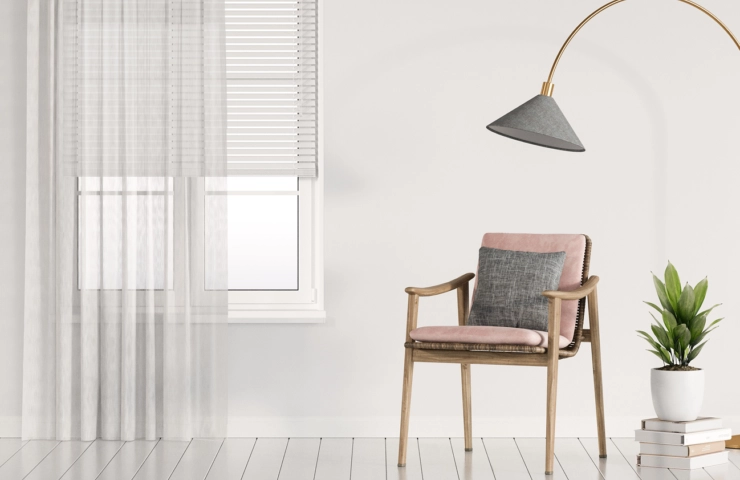Choosing and using sheers
Sheer curtains are often overlooked as a window furnishing since they don’t block much light, but they’re actually very versatile. Light and airy, they can filter and diffuse light during the day while retaining privacy and can be layered with other curtains or blinds for extra versatility. And since they come in variety of colours, pattern options, and fabric types, you can achieve very different looks with sheer curtains.
Here’s our advice on which rooms to try sheers in and various ways to hang them for different effect:
How to use sheers
Sheers can be used on their own, but we only recommend this for windows in non-living areas (eg. hallways, entryways, stairwells, etc.) as they don’t offer insulating or light blocking properties. Sheers are most often used to enhance privacy while allowing light in. But keep in mind this privacy is only during the day; once it’s dark outside and your lights are on, the sheers will be transparent from the outside. This is why sheer curtains the perfect partner for heavier, blockout curtains or roller blinds. They can also be easily paired with venetian blinds. These options allow you the most versatility in insulating and light and privacy control.
Sheers provide a soft relief in a room that already has a lot going on visually with busy patterns. They’re an excellent choice for tying together mismatched windows, or you can use them to break up large continuous windows into sections by bunching panels together. Sheers also make an elegant room divider if you have large open plan spaces.

What rooms are sheers best in?
Sheers are an ideal solution for any room that gets a lot of light but as they are made of fabric, may not be the best choice in the kitchen or bathroom with all that moisture and heat. As the main benefit of sheers is diffusing light while still retaining visibility outwards, sheers are an excellent addition to bedrooms and living spaces, especially those exposed to the road front or neighbouring properties.

